Busted: Pentagon Contractors’ Report on ‘Wuhan Lab’ Origins of Virus Is Bogus
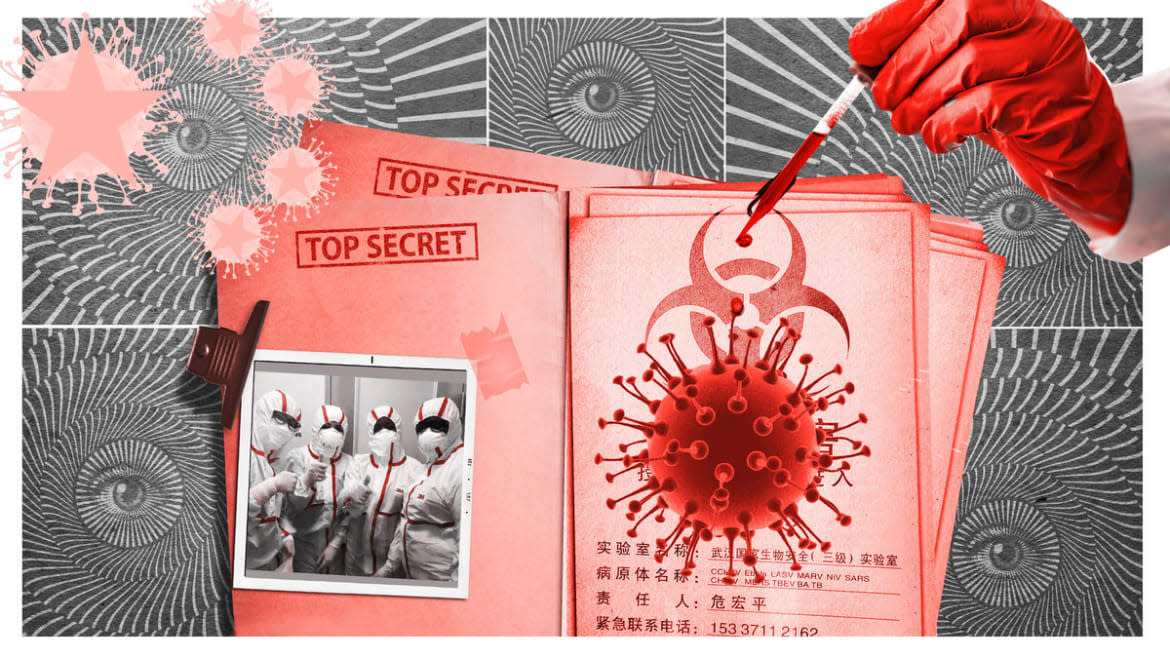
A shocking report suggesting that the coronavirus was “release[d from] the Wuhan Institute of Virology” in China is now circulating in U.S. military and intelligence circles and on Capitol Hill. But there’s a critical flaw in the report, a Daily Beast analysis reveals: Some of its most seemingly persuasive evidence is false—provably false.
Multiple congressional committees have obtained and are scrutinizing the 30-page report, produced by the Multi-Agency Collaboration Environment (MACE), a part of Sierra Nevada, a major Department of Defense contractor. The report claims to rely on social media postings, commercial satellite imagery, and cellphone location data to draw the conclusion that some sort of “hazardous event” occurred at the Wuhan virology lab in October 2019—an event that allowed COVID-19 to escape. It’s a theory that has gained currency on the political right and in the upper tiers of the Trump administration.
But the report’s claim centers around missing location data for up to seven phones — and in many cases, less than that. It’s too small a sample size to prove much of anything, especially when the same devices showed similar absences in the spring of 2019. The MACE document claims a November 2019 conference was canceled because of some calamity; in fact, there are selfies from the event.
What’s more, imagery collected by DigitalGlobe’s Maxar Technologies satellites and provided to The Daily Beast reveals a simpler, less exotic reason for why analysts believed “roadblocks” went into place around the lab after the supposed accident: road construction. The Maxar images also show typical workdays, with normal traffic patterns around the lab, after the supposedly cataclysmic event.
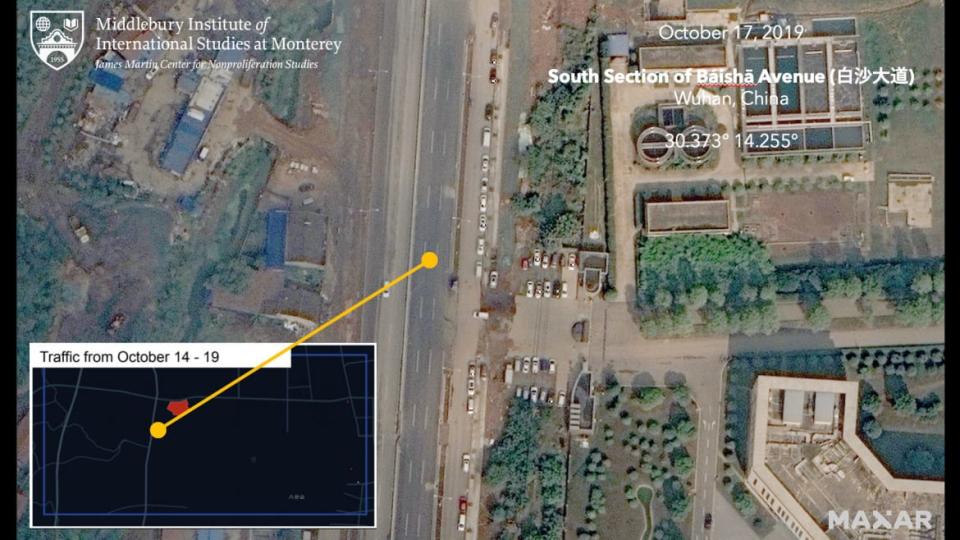
“This is an illustrated guide on how not to do open source analysis,” said Jeffrey Lewis, director of the East Asia Nonproliferation Program at the Center for Nonproliferation Studies, who analyzed the MACE report for The Daily Beast. “It is filled with apples-to-oranges comparisons, motivated reasoning, and a complete refusal to consider mundane explanations or place the data in any sort of context.”
A Department of Defense spokesperson told The Daily Beast that MACE did not produce the report “in coordination with the DoD.” Sierra Nevada did not respond to a request for comment.
The document, which NBC News first published and reported on May 8, made its way to Capitol Hill just days after Secretary of State Mike Pompeo claimed in an interview that there was “enormous evidence” to suggest that the virus came from the lab in Wuhan.
He appeared to back away from that claim this weekend telling Breitbart: “We know it began in Wuhan, but we don't know from where or from whom.”
Members of the Senate Armed Services Committee were briefed on the report by MACE earlier this month following Pompeo’s remarks, according to two congressional aides familiar with the matter. The report then made its way to the Senate Intelligence Committee and the Senate Foreign Relations Committee. Multiple congressional committees have asked MACE to meet and discuss its product. Members have also asked senior officials in the Trump administration to answer questions about whether they trust the report and agree with its claims.
According to Senate aides who have reviewed the document, there appear to be issues with the analysis. One of those sources said the report “doesn’t quite pass the smell test.” Another congressional source told The Daily Beast that the report was “not based on actual intelligence.”
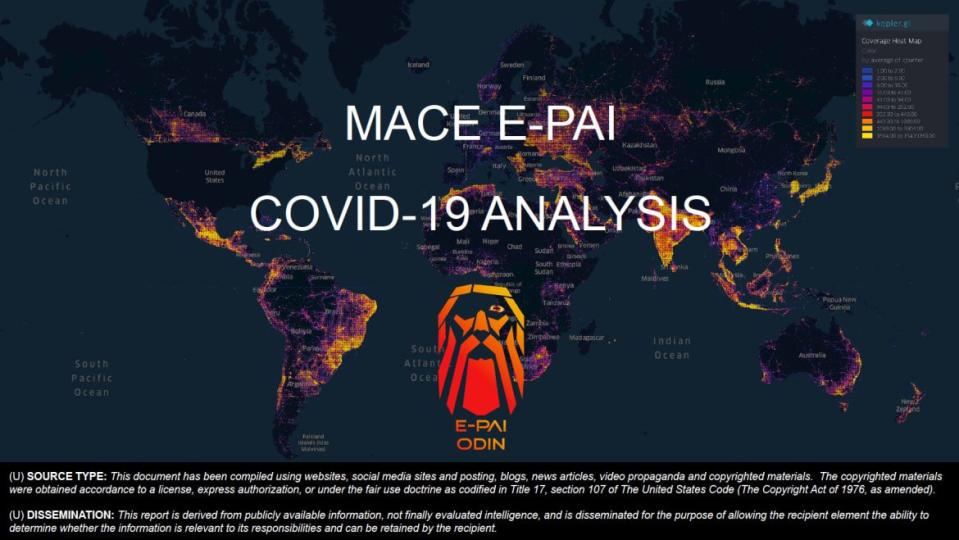
The emergence of the MACE document comes amid a concerted effort to place blame for the coronavirus pandemic squarely on Beijing. And its existence is confirmation that government resources are now being devoted to exploring that proposition, even as the actual intelligence remains far less conclusive. While there’s broad agreement that COVID-19 emerged in China, The New York Times reported that top members of the Trump administration have pushed U.S. intelligence agencies to look for some sort of Chinese government culpability, and to investigate the Wuhan lab theory.
President Trump told reporters earlier this month that the virus had escaped from the Wuhan lab because “somebody was stupid.” Since then, the administration has yet to release any evidence to support that theory. Foreign officials as well as members of Trump’s own coronavirus task force have pushed back. Dr. Anthony Fauci, for one, has said the virus originated “in the wild.”
“Everything about the stepwise evolution over time strongly indicates that [this virus] evolved in nature and then jumped species,” the head of the National Institute of Allergy and Infectious Diseases told National Geographic.
The MACE document suggests that Chinese authorities blocked off traffic surrounding the Wuhan lab in mid-October. The authors leave readers with the impression that a purported drop in local traffic shows that Chinese officials recognized a leak had taken place and tried to prevent passers-by from being infected. “It is believed that roadblocks were put in place to prevent traffic from coming near the facility,” the document says.
In particular, the authors pointed to a decrease in cellphone location data from a highway that passes the lab shortly after the alleged incident. “There was absolutely no traffic” near the facility from Oct. 14-19, the document claims.
But that’s simply not so. That conclusion is disproved by satellite imagery provided to The Daily Beast by DigitalGlobe’s Maxar satellites. Imagery taken on Oct. 17, shows vehicles on the road by the facility, in the lab’s parking lot near the BSL-4 lab where a leak supposedly originated, and at nearby buildings. “The traffic pattern visible on October 17, 2019 is identical to traffic patterns on other days. People are still coming to work,” Lewis said.
The Maxar imagery also shows why MACE analysts may have believed roadblocks were in place around the facility. It shows construction of a highway near the Wuhan lab close to completion in October.
“Those closures and roadblocks are far more likely to relate to construction we know is happening. For what it is worth, there are cars and buses at neighboring businesses on October 17—so I imagine some of the lack of data may relate to collection problems since it appears people were at work,” Lewis observed.
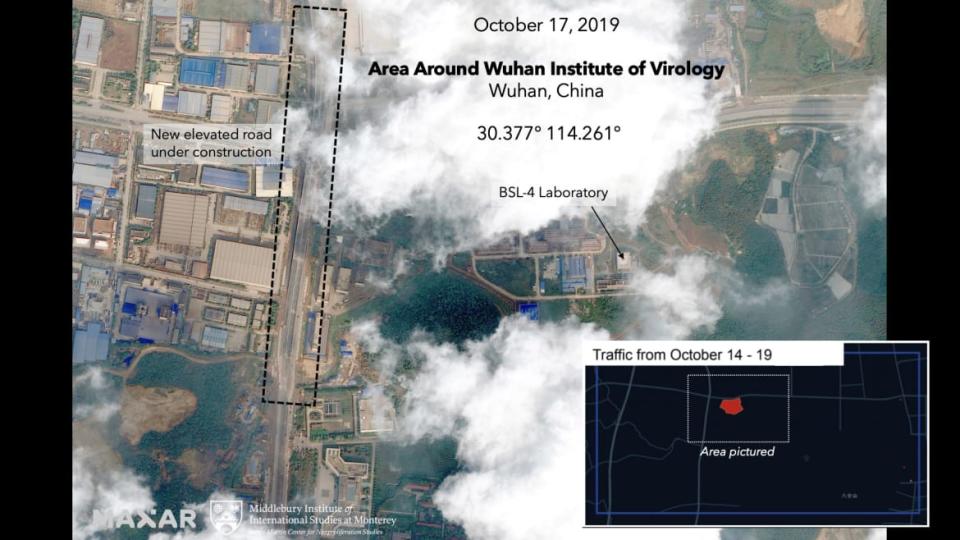
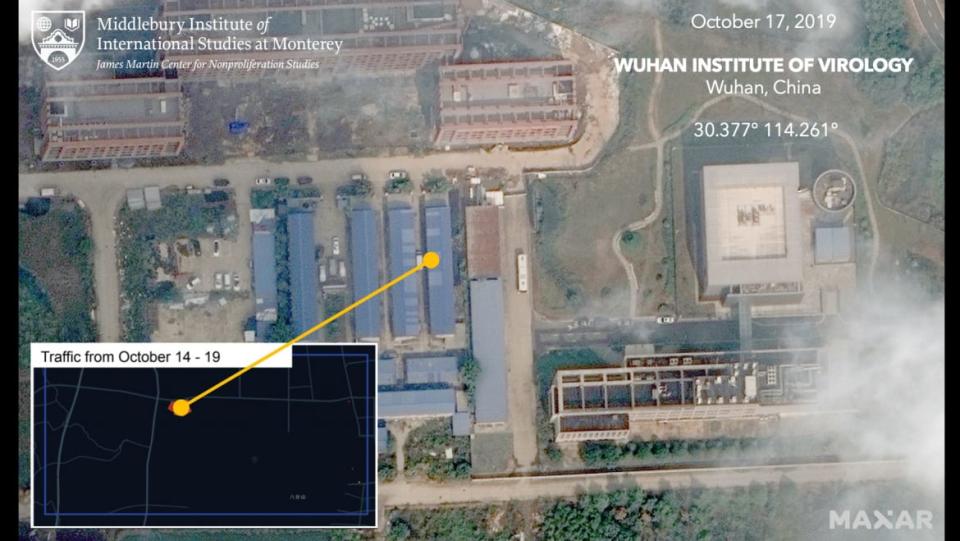
A second satellite image collected within the window when MACE analysts claim there was "absolutely no traffic" bolsters Lewis's analysis. AirBus satellite collection from October 15, 2019 "showed vehicles operating on the road running north of the Wuhan Institute of Virology," said Chris Biggers, a satellite imagery analyst who reviewed the imagery for The Daily Beast.

MACE’s analysts tried to establish a “pattern of life” at the Wuhan lab in order to reveal what they claim is an anomaly, one purportedly caused by a leak. The MACE document charts the movement of apparent Wuhan lab personnel into and out of the facility leading up to October, when the alleged leak took place. In one slide, analysts wrote that there is an “18 day gap” in which “there were no observable events” from devices at the lab between Oct. 6 and 24, supposedly suggesting an accidental leak.
In doing so, they appear to have been unaware of a key cultural factor complicating the normal course of events: a holiday. “The first week of October is a golden week in China, which is going to disrupt that pattern,” Lewis said.
Their use of up to seven mobile devices to establish the pattern of life around the lab may have also hindered the analysis.
“The number of cellphones involved is extraordinarily small—in most months it is two or fewer unique devices,” Lewis said. “Note that there were no devices or pings in March and April 2019. Are we to conclude there was an accident in the spring as well? It is far more likely that the one or two phones regularly going near the laboratory took a vacation, got sick, or lost their phone. (These are all things that have happened in my family in the past year.)”
The Daily Beast asked analysts at the award-winning open source investigative news outlet Bellingcat to review the MACE dossier and evaluate the quality of its conclusions. Within minutes of receiving the dossier, Bellingcat senior investigator Nick Waters disproved one of the MACE document’s claims: that a conference on biosafety lab management at the Wuhan lab scheduled for the first week of November was canceled.
Waters found a Facebook post from a Pakistani scientist who had attended the event and taken selfies there, including at the BSL-3 laboratory. The conference did, in fact, take place, as NBC first reported.
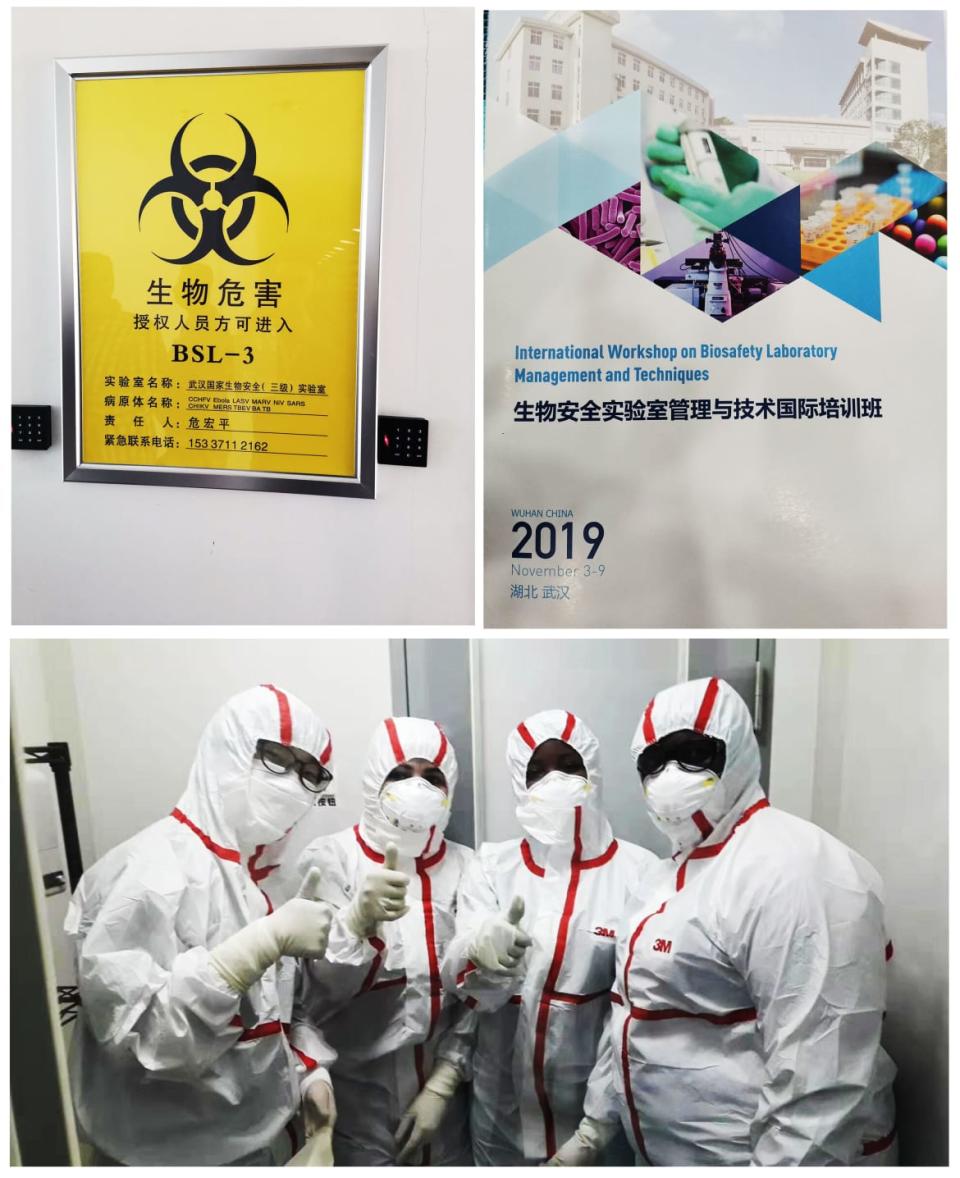
“Whoever wrote this document is clearly confused about the nature of ‘open source’ information. Not only does the key information it contains not appear to be open source, but a simple search of Facebook can disprove one of the key tenets of the assessment,” Waters told The Daily Beast.
He also took a dig at one of the many amateurish elements in the MACE presentation. “Perhaps the authors should have spent more time testing their analysis rather than working out how to crop the eye of Sauron into a logo copy-pasted from the internet,” Waters said.
As the MACE document circulates through America’s halls of power, a second dossier fingering the Wuhan lab for the coronavirus outbreak has caused a massive stir in Australia. The Daily Telegraph, one of Australia’s most widely read newspapers, was the first to claim it had obtained the “dossier” and published a front page story by political editor-at-large Sharri Markson on May 2 with the headline “China’s Batty Science” claiming it as a “world exclusive” and reporting a “Bombshell dossier lays out the case against the People’s Republic.” The Rupert Murdoch-owned paper went on to detail, over five pages, explosive claims that COVID-19 originated in a lab in Wuhan and that the lab and its scientists were now “the subject of a probe by the Five Eyes intelligence community,” referring to the intelligence-sharing partnership among the U.S., Canada, Australia, New Zealand, and the U.K.
Since then, former Australian foreign ministers and media outlets around the world have openly doubted the origins and intent of the dossier, suggesting that it was leaked to The Daily Telegraph by U.S. interests looking to give credence to the claims made by Trump and Pompeo. “It seems the U.S. embassy gave a confected report to an Australian newspaper inflating baseless claims that the COVID19 virus was hatched in a Chinese laboratory in Wuhan,” former Australian Foreign Minister Bob Carr told The Sydney Morning Herald.
“This is not secret intelligence. It hasn’t been passed by one of the main Five Eyes intelligence agencies to Australia nor generated by Australia intelligence. Some of this stuff being peddled is nonsense,” Neil Fergus, a security expert based in Sydney with the firm Intelligent Risks, told The Daily Beast.
The State Department did not comment on the record for this story. The House Foreign Affairs Committee has reached out to the Australian government seeking additional information about the “dossier,” according to a congressional aide.
Officials in the U.S. and Australia describe both the “dossier” and the MACE document similarly and say they believe both rely on similar data-gathering methodologies. Asked about the “dossier,” one Australian official told The Daily Beast: “It’s a dead story here—it’s not been taken seriously.” An intelligence official in the U.S. described it as a “string of open-source facts strung together.”
Australian Prime Minister Scott Morrison has repeatedly said there is no intelligence to support the theory that COVID-19 originated in a lab in Wuhan.
“What we have before us doesn’t suggest that that is the likely source,” Morrison said in response to comments Trump made saying the virus originated in a Wuhan lab. “There’s nothing we have that would indicate that was the likely source, though you can’t rule anything out in these environments.”
“We know it started in China, we know it started in Wuhan, the most likely scenario that has been canvassed relates to wildlife wet markets, but that’s a matter that would have to be thoroughly assessed,” Morrison added.
Australia, and the U.K. were among more than 120 nations calling on China to allow for an independent investigation into the origins of the virus at the start of the annual assembly of the World Health Organization on Monday. After months of refusals since Beijing was credibly accused of covering up the severity of the virus, China appeared to concede that a WHO investigation would now be allowed to go ahead.
Pompeo’s Unproven COVID-19 Claims Have Officials Freaked Out
According to a Department of Homeland Security report obtained by the Associated Press earlier this month, China has withheld information about the virus—including how it spread and its ability to kill—in part to stock up on much needed medical supplies before the rest of the world. And it appears as though the government also misled the international community about its death toll. In mid-April, Beijing said officials in Wuhan had revised its death count up by 50 percent.
So it’s not surprising that some might wonder whether China was misleading the world about the origins of COVID-19, too. Trump and Pompeo’s claims have worried State Department officials who say the secretary, in particular, is moving too quickly to publicly conclude what intelligence officials around the world are either still trying to understand or have said is inaccurate.
The public declarations by Pompeo have already begun to disrupt diplomatic relationships, officials recently told The Daily Beast, as foreign representatives in Australia and elsewhere have told their U.S. counterparts that the secretary’s statements would make it difficult to get China to agree to an investigation.
Defending her work, The Daily Telegraph’s Markson, who has won multiple Walkley awards, Australia’s highest journalism prize, appeared on Steve Bannon’s podcast War Room: Pandemic on May 12. The former Trump campaign manager asked her about skepticism over the legitimacy of the dossier she had reported on.
“So now in Australia you have really strong attacks from the left that are almost siding with China here. They want an inquiry into how I got the dossier,” she said.
Got a tip? Send it to The Daily Beast here
Get our top stories in your inbox every day. Sign up now!
Daily Beast Membership: Beast Inside goes deeper on the stories that matter to you. Learn more.

